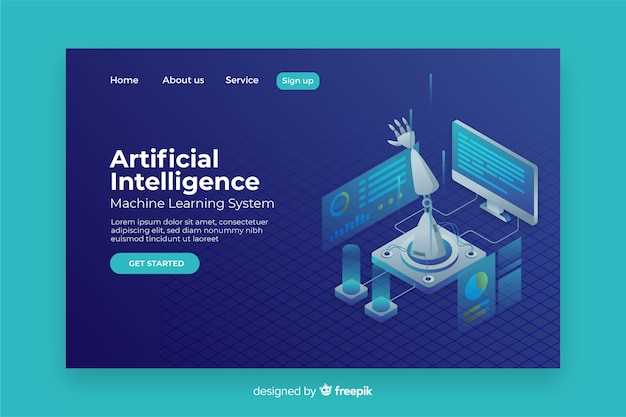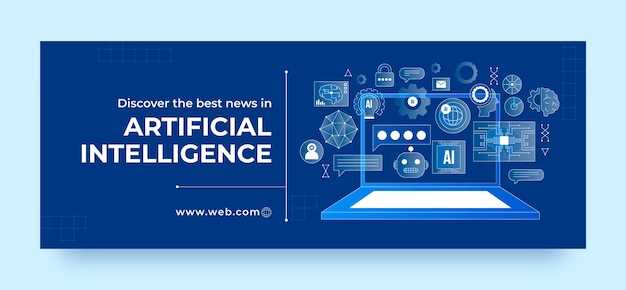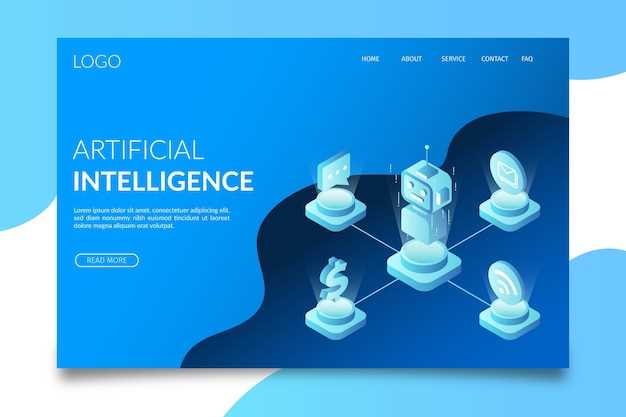In today’s rapidly evolving tech landscape, groundbreaking technologies are reshaping the way we build and experience software. These innovations drive changes at an unprecedented pace. Everyday tasks become more efficient. Complex problems find simpler solutions. New possibilities arise where limitations once stood. The vast potential of these advancements beckons us forward.
Consider everyday applications. They seem to get smarter by the minute. Have you ever wondered what fuels their evolution? There’s a force at play behind the scenes. This force doesn’t just mimic human abilities; it enhances them. Imagine an assistant that learns from every interaction, becoming better over time. This is possible due to powerful algorithms that analyze patterns, predict outcomes, and adapt to new data.
From improving user experiences to automating mundane tasks, this technological leap is setting new standards. The implications are vast and varied. Enhanced security measures protect sensitive information more effectively. Personalized recommendations make user journeys more intuitive. Business strategies grow more informed and precise. Efficiency reaches new heights, while innovation flourishes like never before.
Businessesand developers alike are harnessing these tools to stay ahead. They foster creativity, streamline operations, and unveil new opportunities. Teams can focus on what truly matters: delivering unparalleled value. By leveraging these advancements, organizations not only meet but exceed user expectations. All of this leads to a richer, more engaging tech environment.
Revolutionizing Digital Products with AI
In today’s fast-paced world, advanced technologies are changing the game. Traditional methodologies are giving way to smarter solutions. These innovations aren’t just upgrades; they’re complete overhauls. Efficiency no longer means just faster; it means smarter. We are entering an era where conventional boundaries are getting pushed every day. By leveraging the power of smart tech, organizations are redefining user experiences and operational excellence in unimaginable ways.
Unmatched Efficiency and Personalization

Harnessing cutting-edge tech can dramatically boost productivity. Simple tasks get automated. Tedious processes are streamlined. Workers can focus on strategic activities. Beyond automating tasks, it impacts customer interactions. Users get personalized experiences like never before. Imagine a system that predicts what you need and when you need it, offering solutions tailored specifically for your requirements. The level of customization achievable today is staggering, making the user feel more understood and valued.
Unveiling New Opportunities

Next-gen tech opens doors that were previously unseen. From data analytics to predictive modeling, the scope is vast. Businesses gain insights previously inaccessible. Decision-making becomes data-driven and precise. Real-time analytics allow for immediate adjustments. The landscape becomes more competitive yet rewarding. It’s about innovation and seizing unexplored possibilities. Adopting these advancements means staying ahead of the curve. Companies that embrace this paradigm shift stand to revolutionize entire industries through enhanced strategies and smarter decisions.
Integrating Intelligent Solutions
Incorporating smart solutions into modern applications is an evolving trend. This evolution aims to enhance user experience and operational efficiency. These systems can analyze data and predict outcomes. They offer insights that were previously unattainable. Adapting to these advancements is crucial for staying competitive. Organizations must deploy these innovations thoughtfully and strategically. Only then can they truly harness their potential.
Initial steps are critical. Planning is essential before execution. Understanding the core needs of the business is paramount. Various intelligent tools are available. Some focus on automation. Others specialize in analytics.
- Natural language processing for improved customer interactions
- Machine learning for advanced data analytics
- Automated workflows to enhance operational efficiency
- Predictive analytics for strategic decision making
- Computer vision for image and video analysis
Choosing the right solution is key. What fits one company might not suit another. Evaluating different options can be complex, but making an informed decision is vital. It’s not just about adding a new feature; it’s about solving a specific problem effectively. Integration should align with overall goals, ensuring seamless implementation.
Next comes implementation. A phased approach might work best. Start small but think big. Begin with pilot projects. Monitor and analyze outcomes. Gather feedback continuously. Adjust strategies based on real-world performance.
- Define the problem clearly
- Research available intelligent solutions
- Select the best fit
- Plan a phased implementation
- Execute pilot projects
- Analyze results and optimize
- Roll out across the entire organization
Integration is an ongoing process. Continuous improvement is vital. Technologies evolve. Organizations must stay adaptable. Regularly update and refine strategies. Keep an eye on emerging trends. Being flexible enables sustained growth and success.
Ultimately, leveraging smart solutions is not a one-time project. It’s a journey that requires attention, dedication, and a willingness to learn and adapt. By making thoughtful choices and staying committed, businesses can unlock remarkable potential and achieve lasting results.
Enhancing User Experience
Modern technology needs to captivate and engage people. It’s no longer enough for applications to merely function correctly. To be truly successful, they must also offer a seamless interaction. Users expect instant responses, intuitiveness, and personalization. Different factors contribute to this. Automation plays a vital role. Machine learning can predict preferences.
Understanding User Behavior

Analyzing user actions generates insights. It helps creators understand what works and what doesn’t. Patterns emerge through data collection. When platforms can foresee what a user might do next, they feel more fluid. For example, predictive text is more accurate. It saves time.
Another aspect is adaptive interfaces. They refine themselves based on usage. Personalization is key. Offering suggestions that fit individual preferences enhances satisfaction. A user who sees exactly what they want is more likely to continue using the service. It creates a bond between the service and the individual.
Interactivity and Responsiveness
Quick response times are essential. Users dislike waiting. Speed enhances enjoyment. Real-time data processing contributes to overcoming this hurdle. The faster an application responds, the happier the user. But speed isn’t everything.
Intuitive navigation is also crucial. Simplified interfaces reduce friction. Clear, concise instructions lead users through complex tasks effortlessly. Feedback loops ensure users are informed about the status of their actions. Visual and auditory cues aid understanding.
Ultimately, stellar user experience is a blend of many elements working in sync. Anticipating needs, providing swift responses, and maintaining intuitive design create a holistic experience. This not only meets but often exceeds user expectations, leading to greater engagement and satisfaction.
Optimizing Operational Efficiency
Improving operational efficiency is crucial for staying competitive in today’s fast-paced world. Streamlined processes lead to cost reduction. Enhanced workflows contribute to faster turnaround times. In essence, optimized operations result in better resource allocation. Companies can thus achieve higher productivity with fewer resources. This ultimately enhances their market position.
Integrating sophisticated algorithms helps in identifying bottlenecks. Predictive analytics can forecast demand more accurately. Data-driven insights inform better decision-making. Machine learning tools continually improve process accuracy. Enhanced automation reduces human error, freeing up manpower for strategic roles. Imagine a scenario where your supply chain autonomously adjusts to demand fluctuations in real-time. The potential savings and improvements in service levels are huge.
But the key isn’t just in automation. It’s about using advanced systems to make smarter choices. These systems adapt, learning from new data continuously. By implementing such solutions, businesses can stay ahead of the curve. They’ll not only react faster but also anticipate market changes. It’s a game of foresight and agility. Companies able to optimize their operations will thrive, setting new benchmarks for others to follow.
Harnessing AI for Digital Innovation
In today’s evolving tech landscape, advancements in machine learning and intelligent systems are driving new opportunities. Businesses are discovering ways to leverage these advancements to stay ahead of the curve. Incorporating these systems can significantly enhance operational efficiency. But it’s not just about efficiency. It’s about creating new possibilities and experiences that were previously unthinkable.
Exploring New Frontiers
Intelligent algorithms can analyze vast amounts of data quickly. This ability opens doors to insights that were previously buried. Customer behavior patterns, market trends, and operational inefficiencies become crystal clear. Consequently, companies can make informed decisions rapidly. Additionally, creative processes are being revolutionized. Imagine AI suggesting design changes that align perfectly with user preferences.
Streamlining Operations
Automated processes are reshaping conventional workflows. They relieve employees from mundane tasks. Think about data entry, customer support, and even complex scheduling – handled seamlessly. This shift allows human resources to focus on high-impact tasks. Enhanced productivity and reduced costs are natural outcomes. Imagine teams having more time for strategic planning and innovation.
Enhancing Customer Experience
Smart systems personalize user experiences to an unprecedented degree. They offer tailored recommendations, predictive services, and personalized marketing. Customers feel understood and valued. Real-time support through chatbots and virtual assistants improves satisfaction rates. Furthermore, predictive maintenance can address issues before they become problems, enhancing overall service quality.
Driving Research
Intelligent tools are accelerating discoveries in various fields. From healthcare to finance, the potential for breakthrough findings is enormous. Advanced models can identify patterns and predict outcomes with high accuracy. Scientists can test hypotheses faster and more accurately. Financial analysts can foresee market shifts before they happen.
By embracing these technologies, organizations are not just keeping up. They are leading the charge into a more connected, efficient, and insightful future.
Predictive Analytics in Modern Applications
Predictive analytics have become an essential component in contemporary software solutions. Every day, applications leverage the power of data to anticipate users’ needs and preferences. The ability to foresee trends and behaviors is not just a competitive edge; it’s a necessity.
Companies utilize these systems to enhance customer experiences and optimize operations. Imagine a platform that can predict what you might want to buy next. It saves time and increases satisfaction. Likewise, predictive models can forecast when equipment might fail, allowing for proactive maintenance. This results in reducing downtime and improving efficiency.
Furthermore, these forecasts aren’t limited to commerce or technical maintenance. In healthcare, predictive analytics can identify potential outbreaks and assist in personalized treatment plans. By analyzing vast amounts of data, hospitals can better manage resources and provide early interventions. The implications for the field are immense, offering possibilities that were once confined to science fiction.
Financial sectors also benefit tremendously. Institutions use these analytic techniques to predict market movements. Investors gain insights into where to put their money. Risks are mitigated, and profits potentially increase. Such powerful tools transform the way we see investment strategies and shape economic futures.
Moreover, social platforms use predictive metrics to enhance user engagement. By analyzing patterns in user behavior, they curate content that keeps audiences hooked. It’s all about delivering what the user wants before they even know they want it. The accuracy continuously improves as more data becomes available, creating a cycle of constant refinement.
In conclusion,the influence of predictive analytics spans various industries and applications. They offer a lens through which organizations can see and respond to future possibilities, making them indispensable in today’s fast-paced environment.
Machine Learning for Personalization
Machine learning is changing the way we interact online. It helps tailor experiences to individual users. Each person gets what they need most. It’s not about generic solutions anymore. Specific needs are being met in ways we never thought possible. By analyzing data, machine learning algorithms can predict user preferences.
Understanding User Behavior
Understanding user behavior is key. Algorithms track user actions. They collect data from clicks, searches, and views. Patterns start to emerge. These patterns inform future interactions. For instance, if a user consistently clicks on certain types of content, the system will prioritize similar content in the future. This enhances user satisfaction and engagement. It’s a constant loop of learning and improving.
Tailored Recommendations
Recommendations are now smarter. They are no longer random. Based on past behavior, machine learning can suggest items or content. This feels personal. It makes users more likely to engage. Imagine logging into a platform and seeing exactly what you were looking for. It’s all because of data-driven insights. Over time, recommendations get even better. They become more precise, offering exactly what you didn’t know you needed.
Machine learningalso brings a sense of serendipity to user experiences. Users discover new things that align with their tastes. They might find a new favorite song, book, or product. It’s a seamless blend of predictability and surprise. This balance keeps people coming back. It’s a way to keep users engaged and satisfied over the long term.
In essence,machine learningis all about making experiences more relevant. It’s about understanding and anticipating the needs of individuals. By doing so, it creates a more enjoyable and efficient user journey. This is personalized engagement at its best.
Automation and Productivity Gains
Accelerating work processes and enhancing productivity are key benefits of automating tasks. This allows teams to shift focus from mundane chores to more critical projects. Imagine reducing the need for repetitive actions! Workers can direct more effort towards innovation. Efficiency skyrockets. Overall, performance improvements become evident quickly. The shift to automated systems doesn’t just streamline operations; it also fosters unprecedented growth and development within organizations. Consequently, businesses can stay competitive in ever-evolving markets.
Streamlining Workflows
Automated systems integrate seamlessly into existing workflows, making them more efficient. Manual errors decrease, and tasks get completed faster. This reduction in human involvement simplifies processes. Teams collaborate more effectively, maintaining higher output levels. Automated solutions track performance metrics in real-time. Managers gain valuable insights for better decision-making. Moreover, operational costs drop significantly. Upgrading to automated workflows isn’t just a trend–it’s a necessity for sustained success.
Boosting Output through Automation
Enhanced output is a direct outcome of adopting automated solutions. Repetitive, time-consuming tasks are handled swiftly. Skilled professionals can tackle more complex issues. Productivity tools enable monitoring progress effortlessly. They provide detailed reports, ensuring transparency. Overall output improves. Projects meet deadlines consistently. Equipment downtime reduces. Plus, customer satisfaction increases as turnaround times shrink. By boosting productivity, organizations can achieve their goals more effectively and efficiently.
| Aspect | Manual Process | Automated Process |
|---|---|---|
| Error Rate | High | Low |
| Time Consumption | Lengthy | Quick |
| Cost | High | Low |
| Employee Focus | Mundane Tasks | Strategic Projects |
Video:
Digital Transformation Strategy in the Era of AI
Digital Transformation Strategy in the Era of AI by Ionology 2,072 views 2 months ago 28 minutes
Q&A:
How does Artificial Intelligence enhance user experience in digital products?
Artificial Intelligence (AI) significantly enhances user experience by personalizing interactions and predictive analytics. Through AI, digital products can learn from user behavior to offer tailored recommendations, streamline navigation, and even anticipate needs before they arise. Additionally, chatbots and virtual assistants powered by AI provide instant support, making interactions more dynamic and engaging.
Can AI improve the security of digital products?
Yes, AI can greatly improve the security of digital products. AI-driven security systems can analyze vast amounts of data to detect anomalies and potential security threats in real-time. They can also identify patterns of fraudulent behavior, enabling preemptive measures. Moreover, AI can automate routine security tasks, such as patch management and compliance monitoring, reducing the risk of human error.
What are some examples of AI applications in digital products?
AI applications in digital products range across various industries. In e-commerce, AI-powered recommendation engines suggest products based on user preferences. In healthcare, AI systems can assist in diagnostics and patient care management. FinTech apps use AI for fraud detection and personalized financial advice. Additionally, AI is integral to voice recognition in virtual assistants like Siri and Alexa, enhancing user interaction and functionality.
Are there any potential downsides to integrating AI in digital products?
While AI offers numerous benefits, there are potential downsides to its integration in digital products. One major concern is data privacy, as AI systems often require vast amounts of user data to function effectively. Additionally, there’s the risk of algorithmic bias, where AI systems may inadvertently perpetuate existing biases found in their training data. Finally, reliance on AI can potentially reduce human oversight, leading to critical oversights in decision-making processes.
How can small businesses leverage AI to transform their digital products?
Small businesses can leverage AI to transform their digital products in several ways. For example, they can use AI for market analysis and customer segmentation to better understand and target their audience. Chatbots powered by AI can provide efficient customer service without the need for extensive human resources. Additionally, AI can optimize inventory and supply chain management, predictive maintenance, and even personalized marketing campaigns to boost engagement and sales. Many AI tools and platforms available today are scalable and affordable, making them accessible to small businesses.